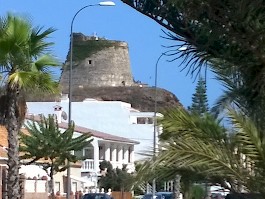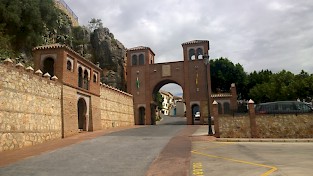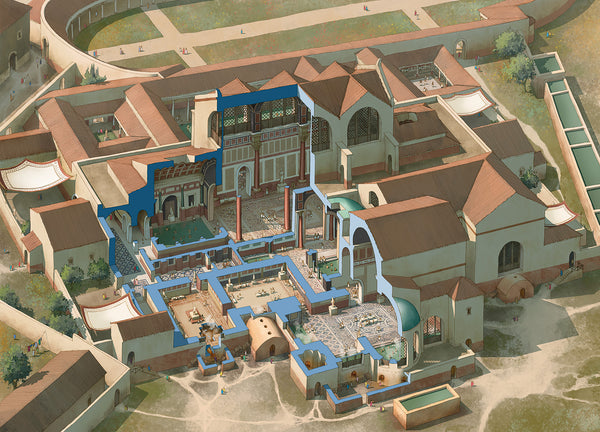Scorchio
For the past few days I’ve been taking a break in Benajarafe in Andalucia with my girlfriend Emma. We were kindly invited over by her parents - who’s to argue with a couple of days relaxation in the Costa de Sol? The British summer has hardly broken 20 degrees C this year, while in Malaga it’s rarely been below 30 degrees daily. Scorchio indeed! Today was slightly cloudy and a mere 28 degrees!

I’m not the sort of person who likes to lie on a beach, I like to be active. So far, I’ve been swimming and walked a couple of miles a day (shouldn’t that be kilometers?). Andalucia is rich in history and castillos (or castles). The first thing I noticed was the costal watchtowers (the Torres). These lookout towers are similar to the British Martello towers in purpose though most are much older. The majority were built in the Middle Ages to give warning of pirate raiders (typically from Africa, people like the barbary corsairs) and raids from hostile nations. The local Torres were initially built by the Muslim Al Andalus, and re-equipped by Cathoilc monarchs after the reconquista and again refurbished in the 18th century. Some had small garrisons while others were simply signalling towers to light beacons along the coast.

Today I went to Comares, described in the ‘Lonely Planet’ guide as “A pretty mountaintop village at the end of an exciting road adventure.” The road journey up certainly was, with many a narrow winding road and sheer drop… We survived, finally arriving at the summit of this massive crag of rocks, on top of which was perched a Spanish village. The trip was worth it as the views were simply breathtaking and navigating its narrow clustered streets was both a challenge and a delight.

Believed to have been founded by the Phoenicians, this hilltop town fortress was taken over some time in the 8th century by invading Berbers who founded the Al Andalus kingdoms in Spain. For a while, it served as one of the bastions of the rebel Omar ibn Hafsun against the Ummayyad Caliphate in 880-918. It was eventually conquered by united kingdoms of Aragon and Castille in 1487 as part of the final stages of the Reconquista. The village also ferociously defended itself and in the end successfully held out against the French in the Peninsular War. This is just the sort of place I like to visit, one soaked in history.

Not much survives of the fortifications, but you can get an idea of how nigh impenetratable the defences would have been. On most sides, there is a sheer drop and in Medieval times, there would have been a low curtain wall in addition to this natural bulwark. There was little left of the Castillo, apart from a natural outcrop which had been fashioned into a tower, a crypt and a few wall fragments which remain. Even so, I got the feeling that in its time it would have been a truly formidable fortress.

So forget the sun, sand and sangria… (okay maybe indulge a little in the sangria!), if you ever get to visit Andalucia, don’t forget the rich heritage all around you. Take a look at the CastillosNet site, an excellent resource for both the famous and forgotten castles of Spain.

